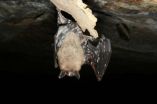(Press-News.org) Clostridium difficile infection (CDI) is a significant and growing problem in hospitals and other health care facilities, but no new drugs to treat the condition have been developed in several decades. However, a large-scale, phase 3 trial conducted by Canadian and U.S. researchers shows that the new antibiotic Fidaxomicin is superior to existing treatments, demonstrating a 45 percent reduction in recurrences vs. the existing licensed treatment. Their results were published in February, 2011 in The New England Journal of Medicine.
"There wasn't much interest in C. difficile for many years, because it wasn't considered a serious disease," said study co-author Dr. Mark A. Miller, head of the Division of Infectious Diseases and Chief of Microbiology at the Jewish General Hospital in Montreal, and a clinical investigator at the Lady Davis Institute for Medical Research. "However, over the past decade the bacterium has mutated into something much more serious that has caused epidemics worldwide. It is particularly notorious for recurrences. About 20 to 30 percent of patients suffer relapses. Recurrent C. difficile is very difficult to treat, and this has spurred interest in newer and better treatments."
Fidaxomicin, developed by Optimer Pharmaceuticals of San Diego, is the first in a new class of narrow-spectrum macrocyclic antibiotics. It is only minimally absorbed from the gut into the bloodstream and is specifically targeted at C. difficile in the intestine. Thus the drug acts by killing C. difficile bacteria without affecting the beneficial flora in the human gut which help stave off recurrences.
A total of 629 patients were enrolled in the multicentre, double-blind, randomized, parallel-group trial conducted between May 9, 2006, and August 21, 2008. They received Fidaxomicin (200 mg twice daily) or the antibiotic vancomycin (125 mg four times daily) orally for 10 days. Vancomycin was first developed in the 1950s, and to date is the only FDA- and Health Canada-approved treatment for CDI.
"These results showed that recurrence of CDI is significantly less likely to occur following treatment with Fidaxomicin versus vancomycin," said lead author, Thomas J. Louie, M.D., Medical Director, Infection Prevention and Control for the Calgary Health Region and professor in the Departments of Medicine and Microbiology-Infectious Diseases, University of Calgary.
"Anybody who knows C. difficile recognizes that recurrences are the major problem with this disease," agreed Dr. Miller, also assistant professor in Medicine, Microbiology and Immunology at McGill University. "Anything that can reduce the recurrence rate, especially as dramatically as Fidaxomicin, is a very important milestone in the treatment of C. difficile."
INFORMATION:
Contact:
Mark Shainblum
Research Communications Officer
Jewish General Hospital
Lady Davis Institute for Medical Research
Tel.: 514-340-8222 x 6592
Email: mshainblum@jgh.mcgill.ca
Websites: jgh.ca and ladydavis.ca
About the Lady Davis Institute for Medical Research at the Jewish General Hospital
The Lady Davis Institute for Medical Research (LDI), located in Montreal, Quebec, is the research arm at the Jewish General Hospital, and has strong academic ties to McGill University. With over 150 affiliated researchers, the LDI is one of the largest and most important biomedical research institutes in Quebec and all of Canada. Major breakthroughs have been made by LDI researchers in the areas of HIV/ AIDS, aging, cancer, vascular disease, epidemiology and psychosocial science, and have thereby contributed to the health and well-being of millions of patients in Montreal, across Quebec and around the world. Website: ladydavis.ca
About the Jewish General Hospital
Since 1934, the Jewish General Hospital has been a mainstay of superior medical care for generations of patients of all backgrounds. One of Quebec's largest and busiest acute-care hospitals, the JGH is committed to improving the quality of healthcare for all Quebecers in partnership with the provincial healthcare network. In this anniversary year, the Jewish General Hospital has redoubled its commitment providing patients the best possible care in a clean, safe and human-centered environment. The JGH is able to deliver these pioneering, innovative medical services by strengthening its role as a McGill University teaching hospital, by expanding and upgrading its facilities, and by pursuing cutting-edge research at the Lady Davis Institute for Medical Research. Website: jgh.ca JGH Musical Video: youtube.com/NaNaVideo
END
Elements heavier than iron come into being only in powerful stellar explosions, supernovae. During nuclear reactions all kinds of short-lived atomic nuclei are formed, including more stable combinations – the so-called magic numbers – predicted by theory. Yet here, too, there are exceptions: the islands of inversion. Headed by physicists from the Excellence Cluster Universe at the Technische Universitaet Muenchen (TUM), an international team of scientists has now taken a closer look at the island that was first discovered. They have now published their results in Physical ...
For almost two decades, cardiologists have searched for ways to see dangerous blood clots before they cause heart attacks.
Now, researchers at Washington University School of Medicine in St. Louis report that they have designed nanoparticles that find clots and make them visible to a new kind of X-ray technology.
According to Gregory Lanza, MD, PhD, a Washington University cardiologist at Barnes-Jewish Hospital, these nanoparticles will take the guesswork out of deciding whether a person coming to the hospital with chest pain is actually having a heart attack.
"Every ...
GAINESVILLE, Fla. — A NASA team including three University of Florida astronomers has found six new planets in a distant solar system that in some ways resembles our own.
The NASA team, including UF associate professor Eric Ford, postdoctoral associate Althea Moorhead and graduate student Robert Morehead, will announce its findings in Thursday's issue of the journal Nature.
"This is the new prototype for a system of rocky planets beyond our own," Ford said. "It changes our understanding of the frequency of solar systems like our own in deep space."
The planets orbit ...
– Symptomatic lumbar disc disease, a condition caused by degeneration or herniation of the discs of the lower spine, may be inherited, according to a new study published in the Journal of Bone and Joint Surgery (JBJS).
"Previous studies, including studies of twin siblings and subsequent genetic marker studies, have suggested a genetic predisposition for the development of symptomatic lumbar disc disease but have been limited by a small number of patients," noted study author Alpesh A. Patel, MD FACS, assistant professor of orthopaedic surgery at the University of Utah ...
PITTSBURGH—Writing can be a solitary, intellectual pursuit, but researchers at Carnegie Mellon University have shown that the task of writing an informational article also can be accomplished by dozens of people working independently online.
Each person in the CMU experiments completed just a sliver of the work of preparing an article, such as preparing an outline, gathering facts or assembling facts into simple prose. The "authors" never even spoke with each other. But the research team led by Aniket Kittur, assistant professor in CMU's Human-Computer Interaction Institute ...
SAN ANTONIO (Feb. 2, 2011) — Obesity among women of childbearing age is increasing worldwide. Because babies of obese mothers are themselves predisposed to obesity, society can reasonably expect the epidemic of obese and overweight people to continue through future generations.
In the midst of this trend, UT Health Science Center San Antonio obstetrics researchers are studying the question: If mothers lose body fat before pregnancy, does it improve the lifelong health of their children? This could be one way to break the transgenerational cycle. A collaborative study ...
A team of wildlife experts led by UC Davis called today for a national fight against a new fungus that has killed more than 1 million bats in the eastern United States and is spreading fast throughout North America.
"If we lose bats, we lose keystone species in some communities, predators that consume enormous numbers of insects, and beautiful wildlife species that are important parts of North America's biodiversity," said Janet Foley, a UC Davis professor of veterinary medicine at the Center for Vectorborne Diseases.
Foley and her co-authors' call to action appears today ...
Nacre, commonly known as mother-of-pearl, is the iridescent material lining many mollusk shells. It is part of a two-layer armor system that protects the animal from predators. The brittle outer layer of the shell absorbs the initial impact, but is prone to cracking. To prevent these cracks from catastrophically propagating through the shell to the animal itself, the nacreous layer is surprisingly strong and tough, with outstanding crack arresting properties. Thus it acts as a lining to maintain the integrity of the shell in the event of cracking of the outer layer.
"What ...
Boulder, CO, USA - GSA Bulletin is now regularly posting pre-issue publication content -- finalized papers that have not been assigned to an issue but are not under embargo. GSA invites you to sign up for e-alerts and/or RSS feeds to have access to new journal content the minute it is posted online. Go to http://www.gsapubs.org/cgi/alerts and enter your e-mail address to manage your subscriptions.
Faulted terrace risers place new constraints on the late Quaternary slip rate for the central Altyn Tagh fault, northwest Tibet
Ryan D. Gold et al., Dept. of Geology, ...
Surgery to "deactivate" migraine headaches produces lasting good results, with nearly 90 percent of patients having at least partial relief at five years' follow-up, reports a study in the February issue of Plastic and Reconstructive Surgery®, the official medical journal of the American Society of Plastic Surgeons (ASPS).
In about 30 percent of patients, migraine headaches were completely eliminated after surgery, according to the new study, led by Dr. Bahman Guyuron, chairman of Plastic and Reconstructive Surgery at University Hospitals Case Medical Center and Case ...


